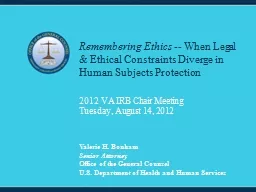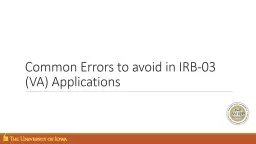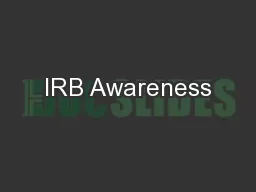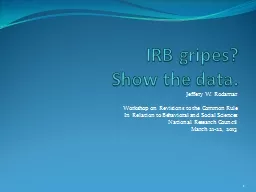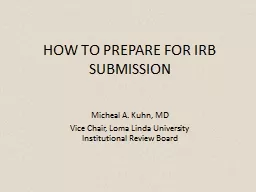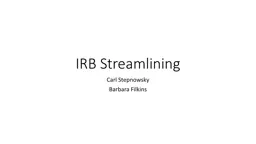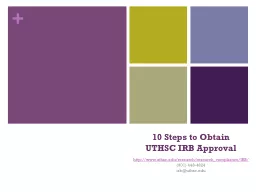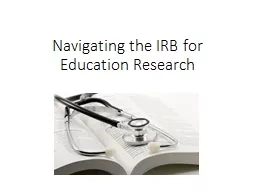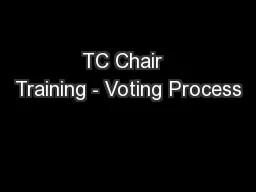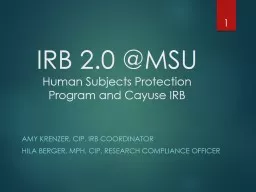PPT-2012 VA IRB Chair Meeting
Author : phoebe-click | Published Date : 2016-03-26
Tuesday August 14 2012 Remembering Ethics When Legal amp Ethical Constraints Diverge in Human Subjects Protection Valerie H Bonham Senior Attorney Office of the
Presentation Embed Code
Download Presentation
Download Presentation The PPT/PDF document "2012 VA IRB Chair Meeting" is the property of its rightful owner. Permission is granted to download and print the materials on this website for personal, non-commercial use only, and to display it on your personal computer provided you do not modify the materials and that you retain all copyright notices contained in the materials. By downloading content from our website, you accept the terms of this agreement.
2012 VA IRB Chair Meeting: Transcript
Download Rules Of Document
"2012 VA IRB Chair Meeting"The content belongs to its owner. You may download and print it for personal use, without modification, and keep all copyright notices. By downloading, you agree to these terms.
Related Documents

